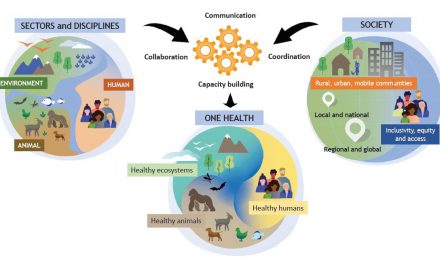In a groundbreaking advancement for gut health research, scientists from the National University of Singapore (NUS) have successfully developed a 3D microscopic version of the human intestines. This innovative model, condensed into a chip about half the size of a five-cent coin, is known as the Gut-Microbiome on a Chip (GMoC).
The GMoC system provides a realistic in vitro microgut model that enables researchers to investigate the intricate interactions of gut microbes and their collective impact on gut health. By offering a scalable, reproducible, and efficient method to study the gut microbial community, this innovation has significant implications for the preventive healthcare and pharmaceutical industries.
A Significant Step in Gut Health Research
Professor Lim Chwee Teck, Director of the NUS Institute for Health Innovation and Technology (iHealthtech) and a researcher in the Department of Biomedical Engineering at NUS, emphasized the significance of this advancement. “The GMoC system represents a major leap in our ability to explore the impact of the gut microbial community on gut health and diseases,” he stated. “By creating a physiologically relevant gut model capable of culturing diverse gut microbes, we can gain deeper insights into their roles in maintaining health and preventing diseases.”
The findings from this research were published in the journal Advanced Science.
Understanding the Role of Gut Microbes
The human intestines house trillions of bacteria, fungi, and viruses, collectively forming the gastrointestinal microbiome. These microorganisms can either promote or impair health, but the exact mechanisms behind their effects remain largely unknown. Researchers have observed distinct differences in the gut microbiomes of healthy individuals and those suffering from diseases. However, due to the complexity of microbial interactions within the gut, pinpointing the precise ways in which microbes contribute to health or disease has been challenging.
The newly developed 3D “microgut” platform by NUS researchers offers a more accurate representation of the gut microbial community than previous models. It replicates biological conditions found in the human gut, such as food movement and oxygen levels, mimics the gut lining’s structure and function, and allows for real-time study of microbial interactions.
A Revolutionary In Vitro Gut Model
The GMoC system offers a sophisticated in vitro model of the human gut by incorporating a 3D version of the gut epithelium. This model accurately replicates critical intestinal structures such as villi—tiny finger-like projections responsible for nutrient absorption. Additionally, the system fosters a co-habitation environment for intestinal cells and microbes while simulating the dynamic conditions of food movement.
By recreating these vital structures and physiological conditions, the GMoC model provides researchers with a superior platform to investigate how different microbial species interact within the gut. Understanding these interactions is crucial in identifying ways to prevent microbial imbalances that can lead to diseases.
Real-Time Visualization and Future Applications
One of the most remarkable features of the GMoC system is its ability to facilitate real-time visualization of microbial interactions within the gut. Scientists can now study how different bacterial species compete for nutrients and physical space, which is key to maintaining a balanced gut microbiota. These findings could pave the way for the development of targeted microbiome-based therapies and interventions.
The unique design of the GMoC chip ensures scalability, allowing multiple tests to be conducted on a single chip. This versatility makes it a powerful tool for research and potential applications in drug development and gut health therapies.
Looking Ahead: Future Developments and Commercialization
The NUS research team aims to enhance the complexity of the GMoC system by incorporating additional mechanical cues, improving cellular complexity, and refining oxygen gradients. These developments will enable even more accurate simulations of the human gut environment.
Biologically, the team plans to use the device to further study microbial interactions in response to various stimuli, such as nutrients and antibiotics. These insights could help develop strategies to manipulate the gut microbiome for better health outcomes.
From a commercialization perspective, the team is focused on reducing manufacturing costs and standardizing production to make the technology more accessible for widespread research and pharmaceutical applications.
By offering a realistic, in vitro model of the gut microbiome, the GMoC system represents a crucial advancement in the study of microbe-induced diseases, the identification of new therapeutic targets, and the development of treatments aimed at modulating the gut microbiome to enhance health and clinical outcomes.
Disclaimer: The information in this article is based on current scientific research and developments. While promising, the GMoC system is still under investigation, and further studies are needed to fully understand its potential applications. Readers are advised to consult medical professionals before considering any health-related decisions based on this research.












